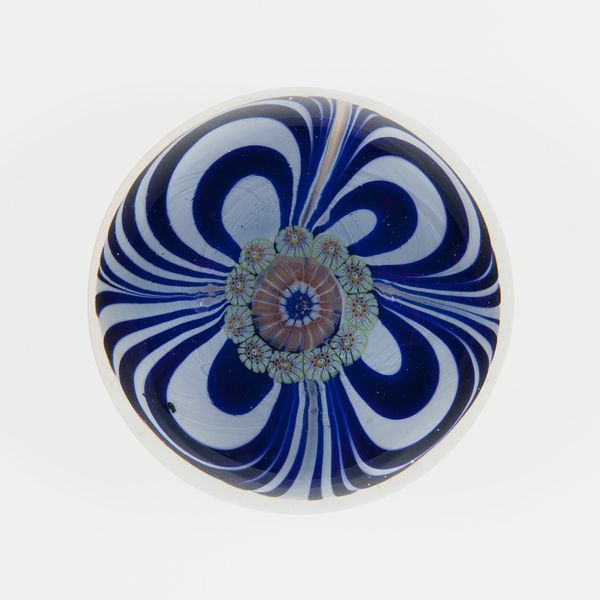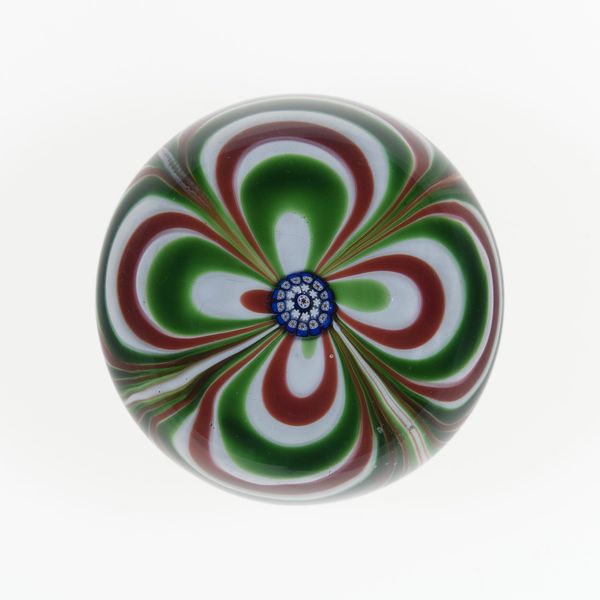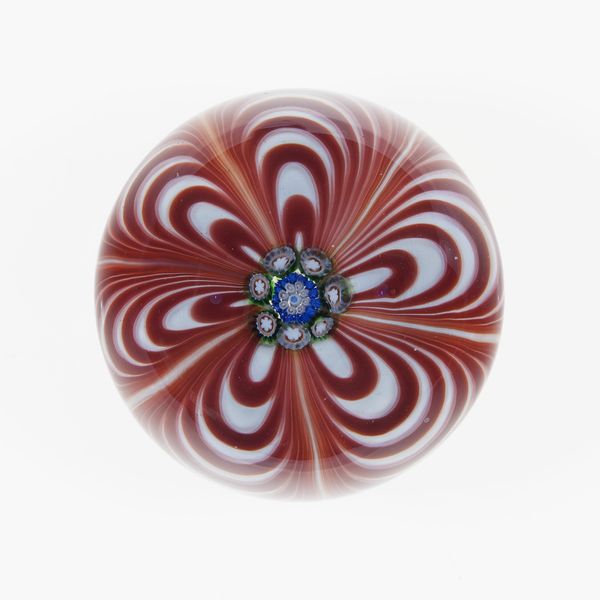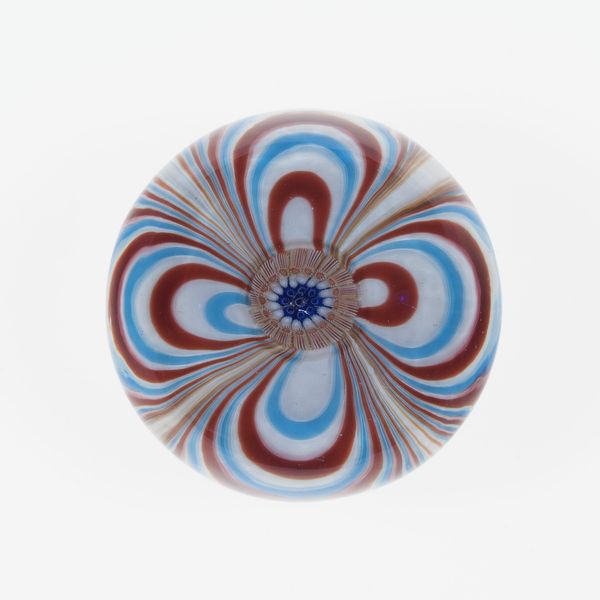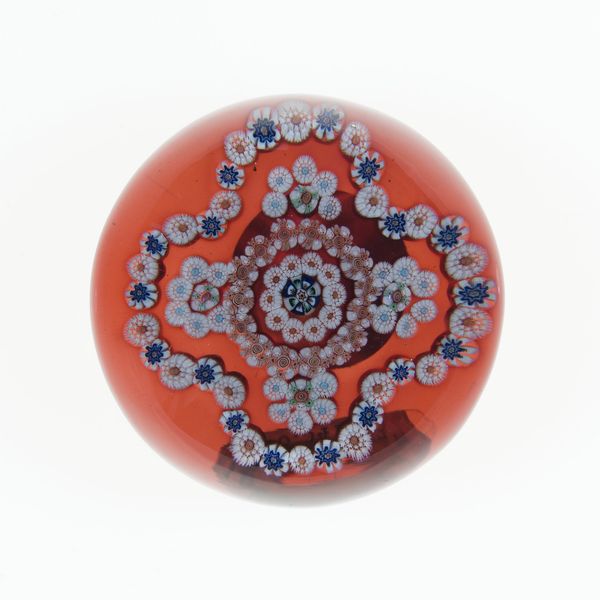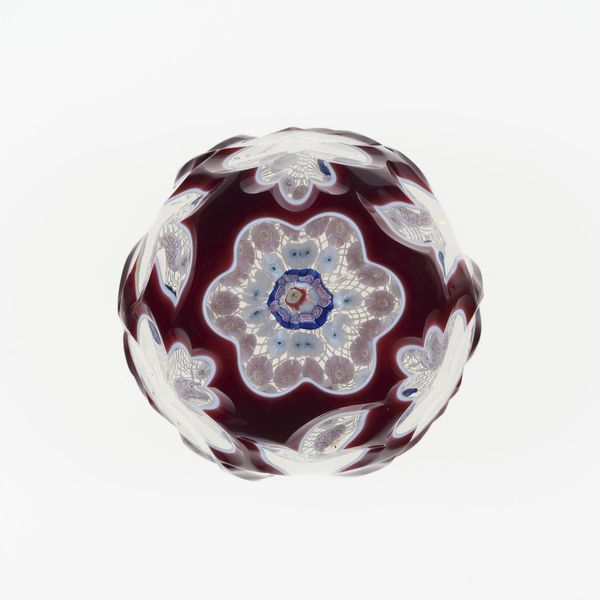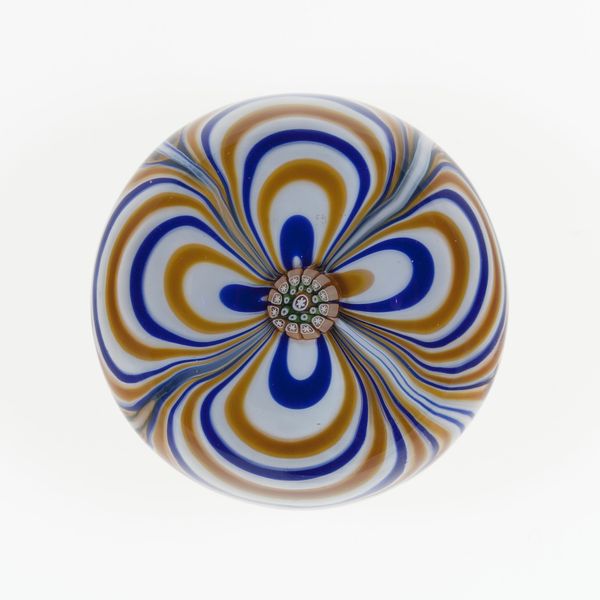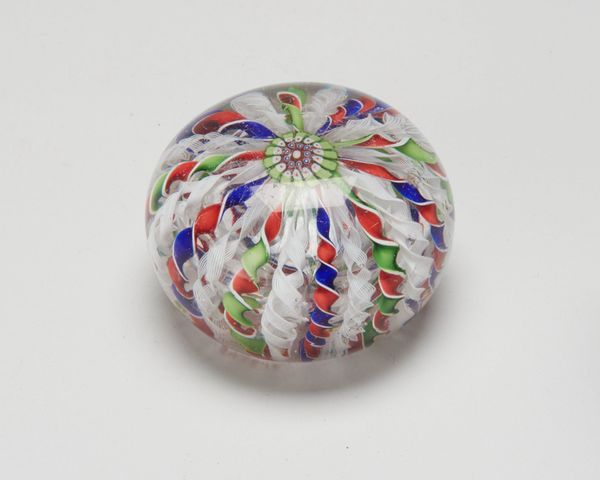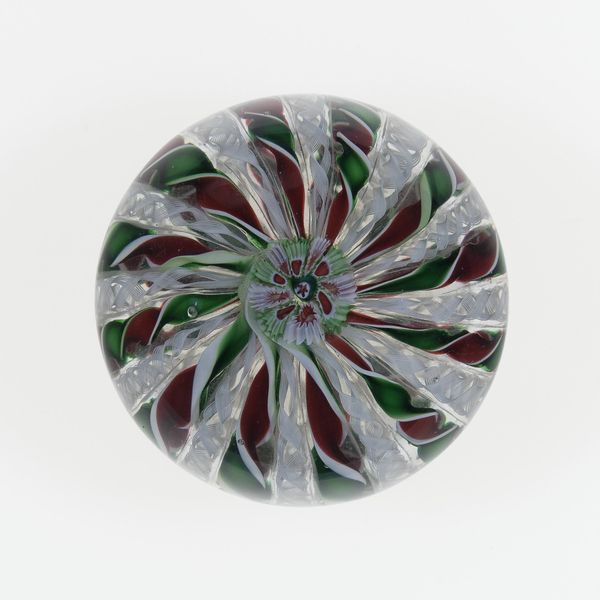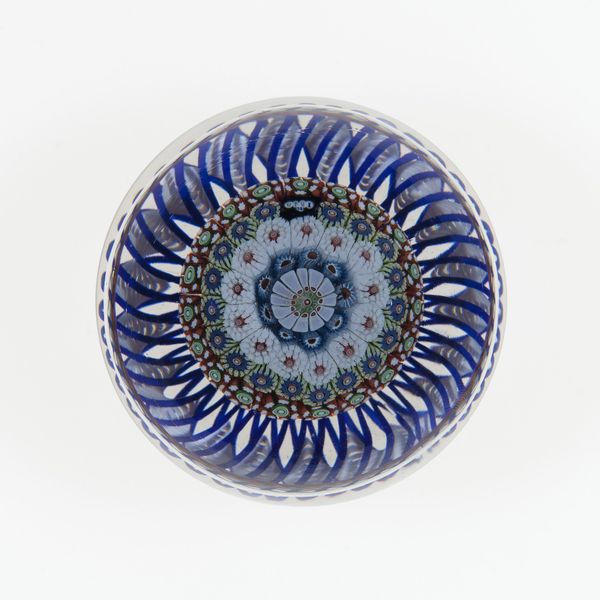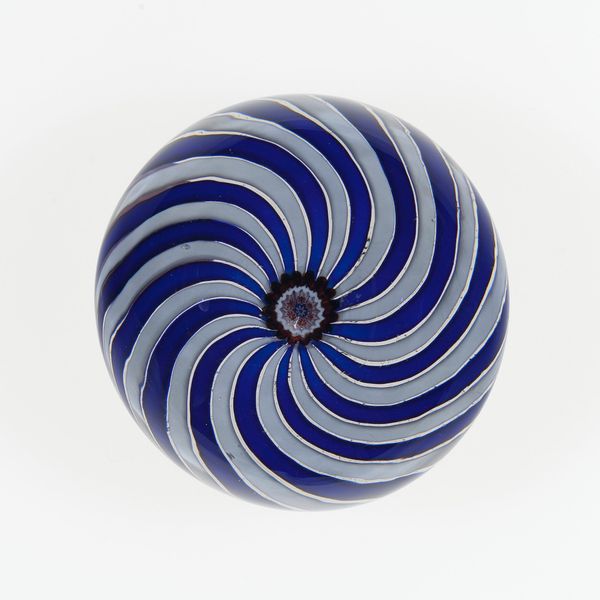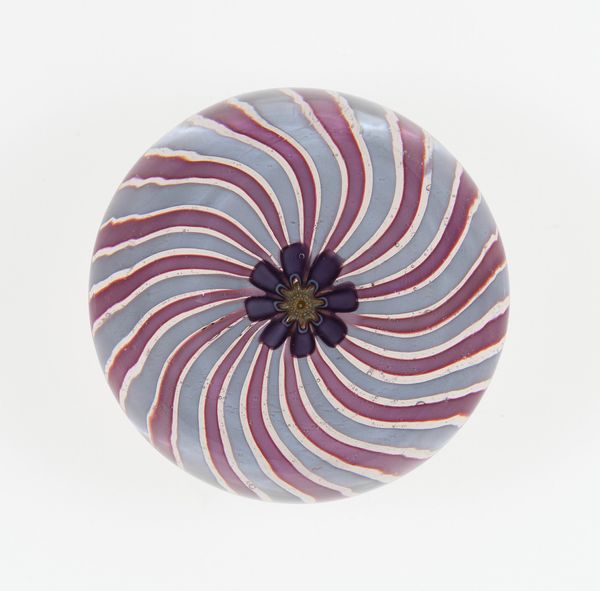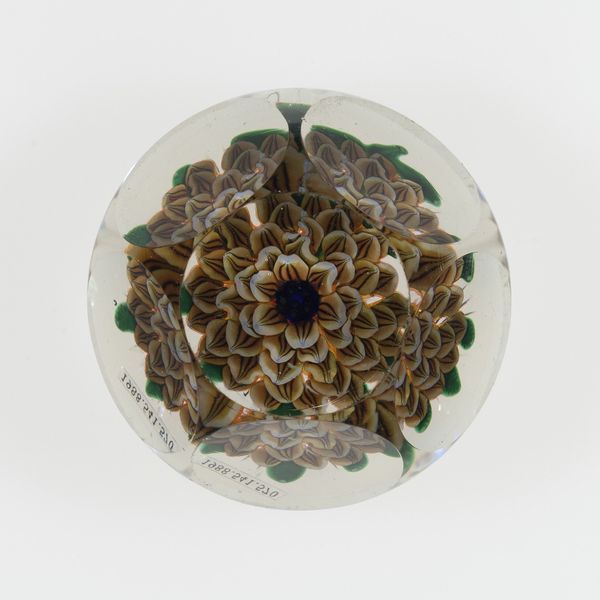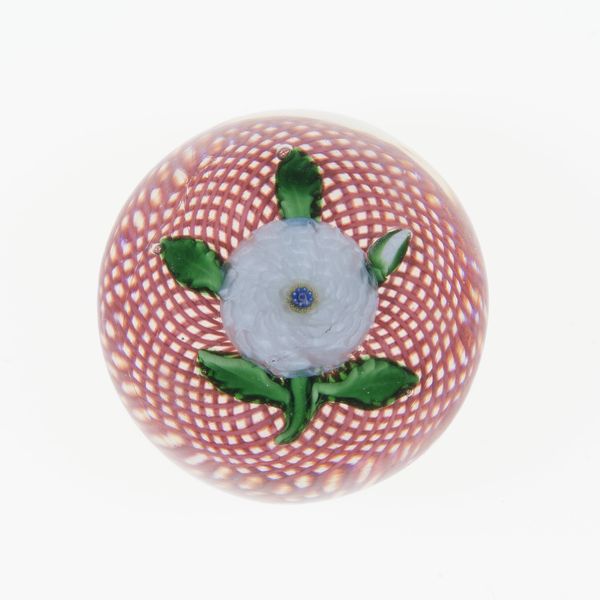
paper, glass, impasto
#
3d sculpting
#
paper
#
glass
#
impasto
#
decorative-art
Dimensions: Diam. 7.6 cm (3 in.)
Copyright: Public Domain
Curator: Welcome. I’d like to direct your attention to "Paperweight", crafted circa 1846 by the Compagnie de Saint Louis and now part of the Art Institute of Chicago's collection. It's a stunning example of decorative art from the mid-19th century. Editor: Immediately striking is its jewel-like quality, the smooth, cool glass giving a sense of substantial weight, a delightful contrast with the delicate floral imagery trapped inside. The use of impasto within adds an almost tactile element. Curator: The artistry here lies in the socio-economic factors, namely, how industrial advancements in glassmaking allowed intricate, almost trompe-l'oeil effects to become democratized within decorative objects for the emerging middle class. No longer exclusive to the aristocracy, these paperweights signaled bourgeois aspiration and taste. Editor: But let’s focus on the composition. Note the radiating bands of ruby and white swirling toward the millefiori center, directing your eye inward. It creates this illusion of depth, a miniature world under glass, while the central floral grouping offers a complex pattern. The balance is harmonious. Curator: Right, this intricate arrangement resonated with broader societal trends of the era. The fascination with natural history and botanical illustrations found its way into decorative arts, reflecting how the expanding industrial world still yearned to be connected to nature. Editor: True, however, formally speaking, these decorative glassworks also became miniature manifestos about materiality and surface itself, disrupting what art should or could be during its time. Curator: I think that’s why the Compagnie de Saint Louis' work achieved such popularity, these items symbolized not just wealth but belonging to an elevated intellectual community as well. Editor: Ultimately, this ‘Paperweight’ asks us to see beauty not merely as ornamentation, but as an intentional engagement with materiality. Curator: Absolutely, its place in our collection reflects the Victorian era’s complicated interplay between technological progress and nature's enduring allure. Editor: I'm grateful we can contemplate such a diminutive object carrying so much history and artistic intent.
Comments
No comments
Be the first to comment and join the conversation on the ultimate creative platform.
